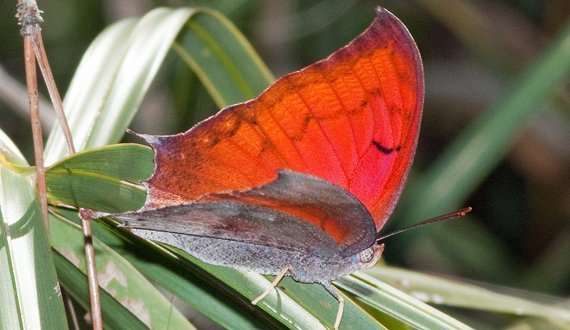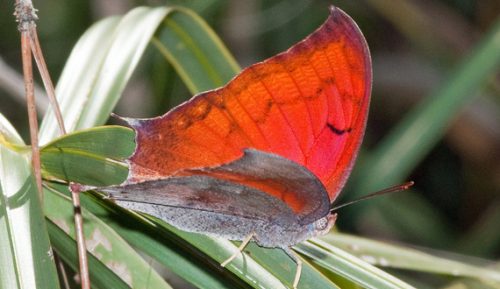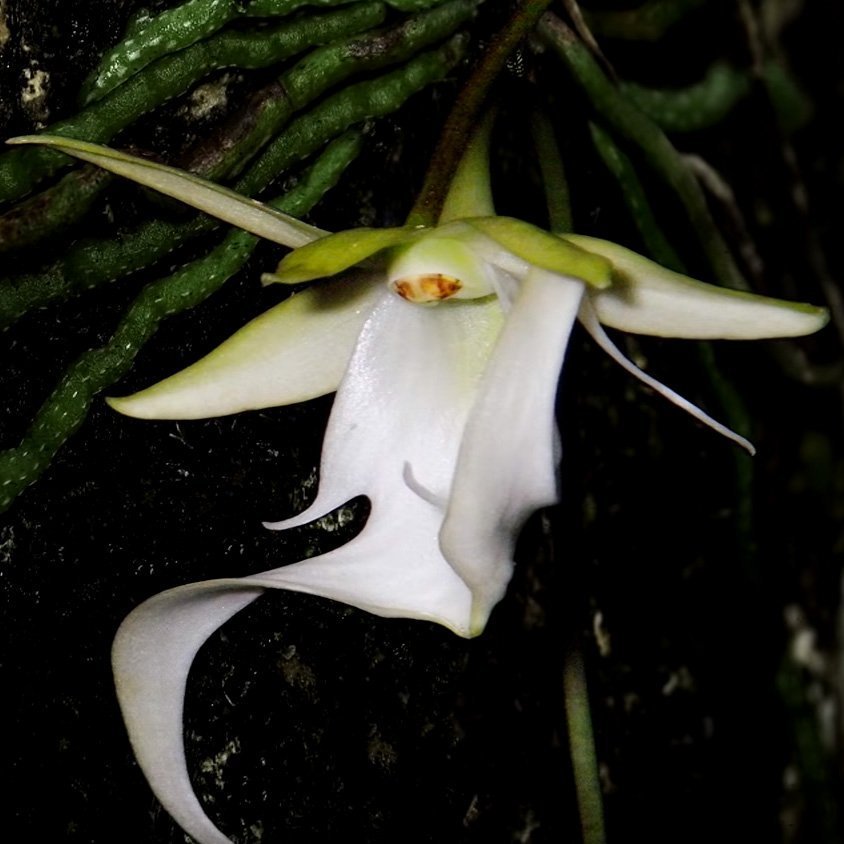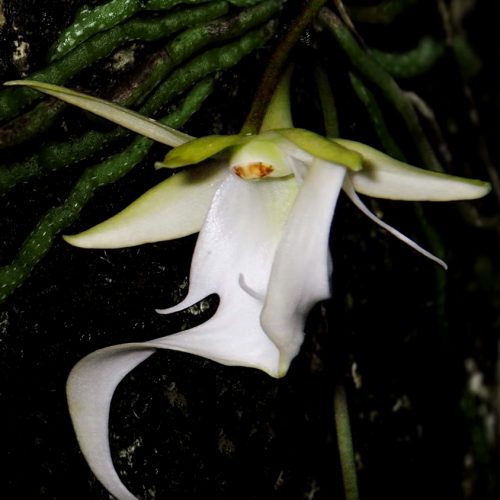The Florida Leafwing (Anaea troglodyta floridalis) is native to Florida. It can be found in the pine rocklands of Florida. The Leafwing was once found throughout Miami -Dade, and Monroe counties. This imperiled butterfly is now found in only one place on Earth, the Everglades National Park. The causes of its decline are the destruction of pine rockland habitat, the introduction of exotic plants and insect species, fire suppression, the use of insecticides for mosquito control, and collecting.
When in flight, the Florida leafwing’s upper side of its wings is red or bright orange. At rest, the lower side of the wings are visible and are brown or gray, which makes the butterfly look like a dead leaf. The front wing is slightly hooked, and the back wing has a pointed tail. Its dead leaf coloration is effective camouflage in its rockland habitat. A leafwing’s wingspan is between 3 to 31/2 inches wide.
Eggs are laid on the leaves of the host plant so caterpillars can eat the leaves. Young caterpillars will make a resting perch from a leaf vein. The older caterpillars live in a rolled-up leaf.
Florida leafwing caterpillars feed only on pineland croton (Croton linearis), its larval host plant. This shrub grows in the understory of pine rockland habitat. Leafwings are dependent on the health of their host plant. The croton and other plants in the pine rockland are dependent on fire to maintain an open rockland where it reduces the competition and infestation of non-native species.
The Florida Leafwing is federally endangered. Scientists at the Everglades National Park are working with conservation groups to ensure that the endemic Florida leafwing does not disappear into extinction.
Photo credit: USFW





Recent Comments